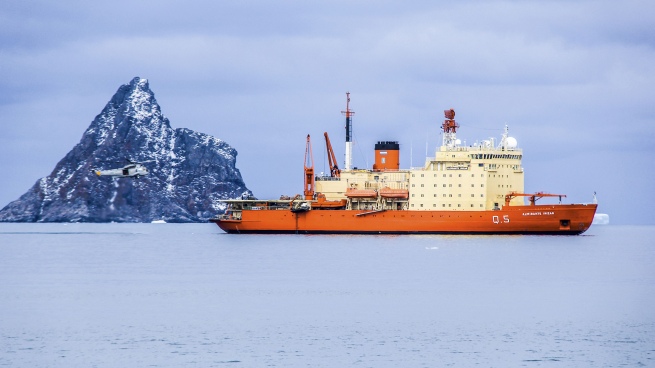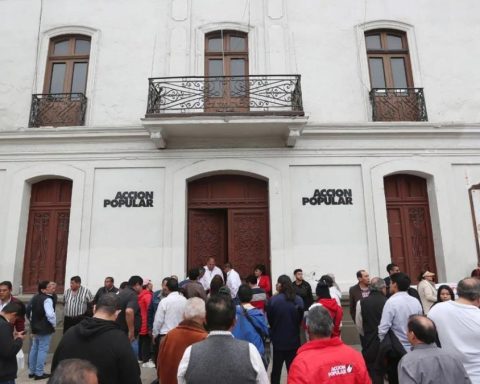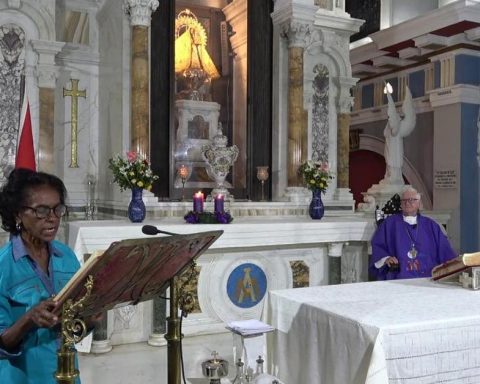All the bases that Argentina operates in its Antarctic territory have access to telecommunications services through the ARSAT-1 and ARSAT-2 satellites and national telephone networks, after the successful installation of new antennas at the Orcadas base which, due to its location, depended on the services of international companies.
This base was established in 1904 on Laurie Island, in the Orkney archipelago, and is the oldest permanent human population in Antarctica, but its location some 1,500 kilometers southeast of the Fuegian city of Ushuaia made it difficult to link with companies of telephony that operate in Argentina or with the ARSAT satellites whose coverage reaches other establishments in the area of the Antarctic Peninsula.
This circumstance, then, made it necessary to establish telecommunications through foreign services.
During the current Antarctic campaign, two telecommunications specialists from the Armed Forces were deployed at the Orcadas base so that, with the collaboration of the 20 members of their crew, they recover, assemble and put into operation equipment that was in disuse and antennas that allow that location have 2G telephony through the Movistar network in Argentina and Internet services through ARSAT.

The Corvette Captain Juan Manuel Garitahead of the Orcadas base crew, stated in a dialogue with Télam that “the commissioning of these antennas is not only a leap in quality for base telecommunications because they put us in the same conditions as if we were on the continent, but also makes us independent from other providers and ensures that all our Antarctic bases communicate through national networks”.
“The commissioning of these antennas makes us independent from other providers and ensures that all our Antarctic bases communicate through national networks”
“Orcadas communications have always been a challenge due to its location and until now that has been solved with a satellite company that gave us Internet and IP Telephony, but that usually works with great difficulty when it is cloudy or there is bad weather, which is a problem in this area where in the three summer months we only had two weeks of clear skies,” he said.
The soldier said that “facing this situation, the Joint Antarctic Command (Cocoantar) designed a plan to take advantage of some equipment that was in disuse at the base and build a satellite link with the Balcarce ground station, in the province of Buenos Aires, which allows us to access Movistar’s 2G network that guarantees us telephony, text messages and some data such as text on WhatsApp”.

“The original project was to bring 4G, but the company was not sure of the scope and preferred that the tests be done with 2G, now that we know it works, we are in the process of increasing data capacity,” he added.
Garita stressed that “another important part of this project is the installation of a second internet antenna with which we achieved the link with ARSAT-2 and the Campo de Mayo teleport in the province of Buenos Aires” and specified that “for now It has a 1 mega download and 128 Kb upload connection, but we are also managing to expand its capacity”.
“On April 17 we were able to establish the telephone connection and on the 19th the internet connection, and although we are going to maintain the current service until these new links have the required capacity, it is a true milestone that all our bases are linked by national telecommunications services, something that is not very common“, he pondered.
Garita added that “on April 21 the icebreaker ‘Almirante Irízar’ finished unloading all the provisions, spare parts and fuel that we will need throughout the year because despite not being as far south as other bases, our position is very inaccessible. in winter since the sea freezes and the only thing that could land here would be a plane with skis like the Twin Otter if the nearby glacier is in good condition; that is why guaranteeing telecommunications is also a vital issue for us”.
“A total of 20 people make up the base, two park rangers and a biologist from the Argentine Antarctic Institute who carry out biological monitoring, sampling, and surveys of geodesy and seismology; three members of the Air Force assigned to the National Meteorological Service who they do meteorological observation and geomagnetism; and 14 Army and Navy personnel assigned to the Cocoantar who attend to the logistical needs to sustain the scientific tasks,” the soldier completed.

The Orcadas base, located on Laurie Island, is the oldest of the Antarctic bases still in operation, located some 3,000 kilometers from Buenos Aires. There, research is carried out on continental and marine glaciology, seismology and meteorological observations, among other scientific tasks.

















